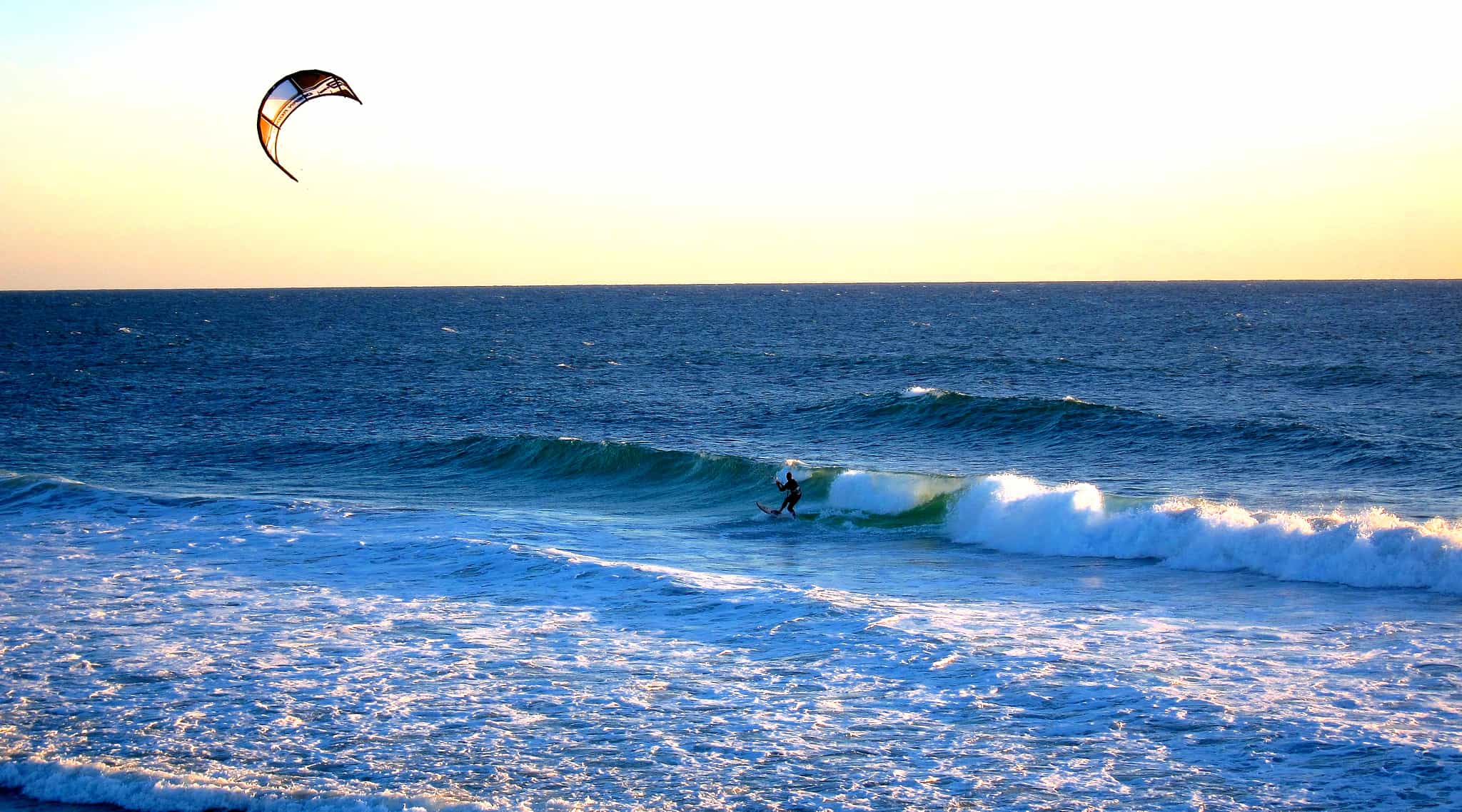One of the coolest things about surfing in Mexico is that it’s a long, thin country that stretches over two surfing seasons. Yes, that’s right; you can start up north near Baja around November and head south in the spring when the northern winds die down. The central part of the country tends to be driest and a good compromise between wind and warmth.
Baja California
 Creativecommons.org/ wisley
Creativecommons.org/ wisley
The peninsula is 1,746 kilometres long and divides nicely into north and south surf zones. Just south of San Diego are a couple great areas that are popular with the SoCal crowd. Just as skiers head to the mountains over Christmas break, surfers head to Baja Malibu. It’s easy to get to and has great waves most of the winter. San Miguel is also popular with the SoCal surfers and beach bums who like to mix some night life into their surf break like Rosarito Beach or even Ensenada, both of which have nice waves along with some good socializing spots.
Serious surfers head for Todos Santos, hopping a boat to get to some internationally known waves that are huge and dangerous. Catching the “largest wave in the Americas” – a giant wave that breaks off the island – is a sport for only the most skilled of surfers. Don’t swim here; the riptides are murderous.
Mainland Mexico, North
 Creativecommons.org/ Wonderlane
Creativecommons.org/ Wonderlane
Mazatlan is a surfers dream between May and September as the deliriously long lefts are most consistent during these months. There are several great beaches to surf including Playa Olas Altas (High Waves Beach), Cerritos, which is a little farther north and escapes some of the crowds during high season, or Isla de las Piedras towards the south, where you can have a cleaner experience without bars on the beach.
Matachen Bay near San Blas has great surf at times but the changing coastline has diminished the waves and you can no longer be sure of catching the longest waves in the world. San Blas is a great town, however, and if you’re a sometimes-surfer on a long vacation you can have some surf to yourself as long as you have other things planned for the rest of your time.
Sayulita, a bit north of Puerto Vallarta, is an excellent place for surfer-wannabees since the protected bay mellows most of the waves. Once you’ve mastered the sport you can travel to Punta Mita to try some bigger surf. The beaches there are popular with local surfers and there tends to be less attitude and showing off.
Mainland Mexico, South
Almost anywhere along the beaches of Colima you’ll find good surf. International tournaments are held here and sorry, but it’s no place for beginners. Pascuales, the first good beach after Manzanilla (also a good beach), has great barrels and waves can reach four metres high starting 40 metres off shore.
Troncones Point a bit farther south does have a few areas for beginners off season but around May the waves tend to be around 4-5 metres high and only skilled surfers should be on them. Nearby La Saladita is an exposed reef and always has waves even when other beaches are quiet.
Puerto Escondida has Playa Zicatela, also known as “The Mexican Pipeline”. The world’s greatest surfers come here to play along with those hoping to up their game. The geography creates huge, barreling waves that take skill and a little moxie to navigate. Huatulco (south) and San Agustinillo (north) both have more manageable waves that still offer plenty of challenge.
The Oaxacan coastline has fewer consistently good surf beaches, but the scenery is stunning. Outside of Escondido you’ll find some local spots but none of the big party scenes. It’s a great rustic surf scene and a lot of fun to backpack, following the waves. When the surf’s up, you’re out with the locals and on the bad days you may just have to lounge in the cantina, swapping tips and telling tales.


